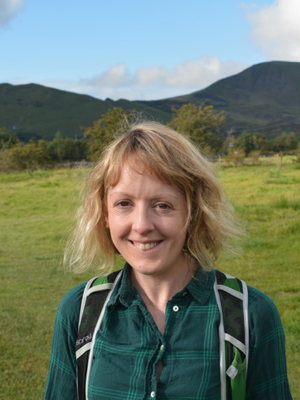With their distinctive black and white markings, badgers are one of the easiest mammals to identify and watch – their eyesight is poor and if you are downwind, still and silent, it is easy to get close to them. Position yourself near an active sett entrance with a solid object behind you, so you are not silhouetted, or watch them feeding in your garden.
Learn everything you need to know about badger social structure, behaviour, identification and breeding in our expert guide to European badgers.
How many badgers are there in the UK?
Badgers are widely distributed in Britain and Ireland, being absent only from parts of the Scottish Highlands and from offshore islands, including the Isle of Man. Estimates of the UK’s badger population vary widely; the last official survey, 16 years ago, arrived at a figure of 350,000 individuals – the largest national total in Europe.
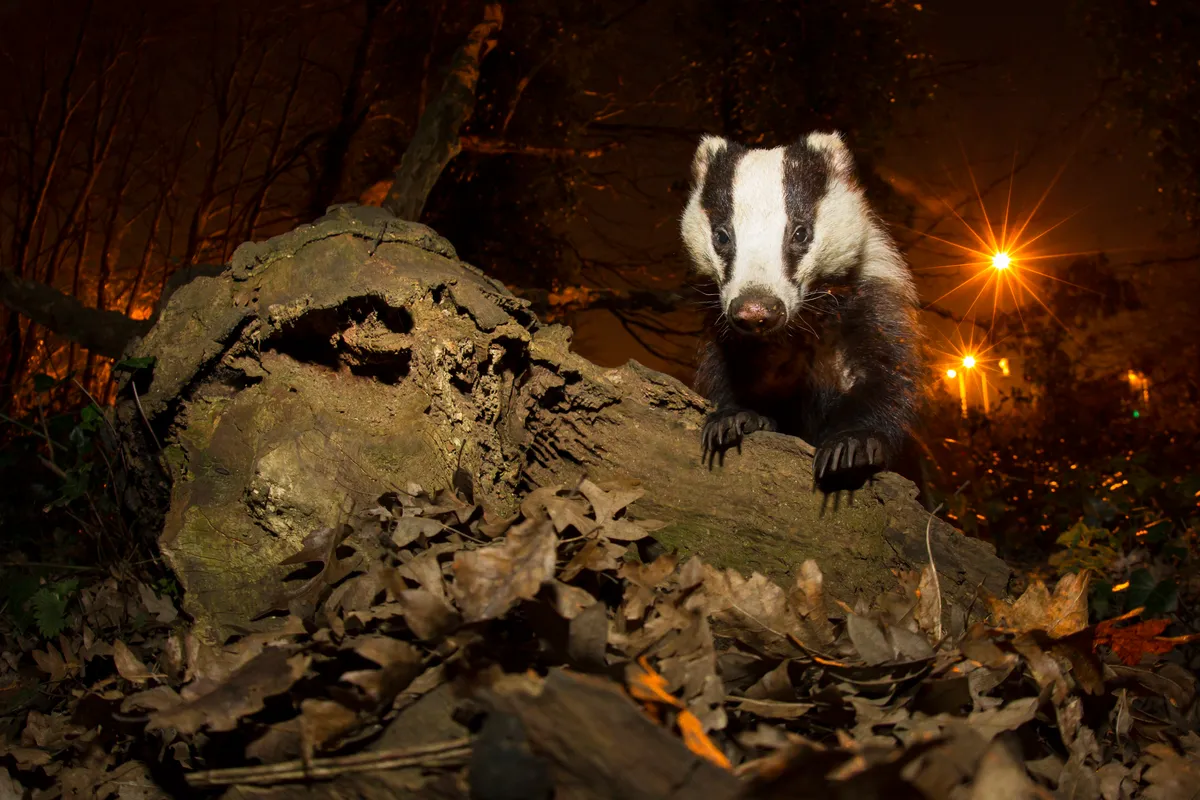
How to tell the difference between male and female badgers
By Steve Harris
Males can generally be distinguished from females by their broader, more domed heads, fuller cheeks and thicker necks. Tails are a less reliable guide – males typically have thinner, whiter tails; females shorter, broader ones.
Albino badgers are rare, but erythristic badgers (in which the black is replaced by reddish pigment) are more common.
Individual badgers are easily recognised by the width and shape of their facial stripes, scars from fights and how much of their ears are left – the conspicuous white tufts are often lost in skirmishes.
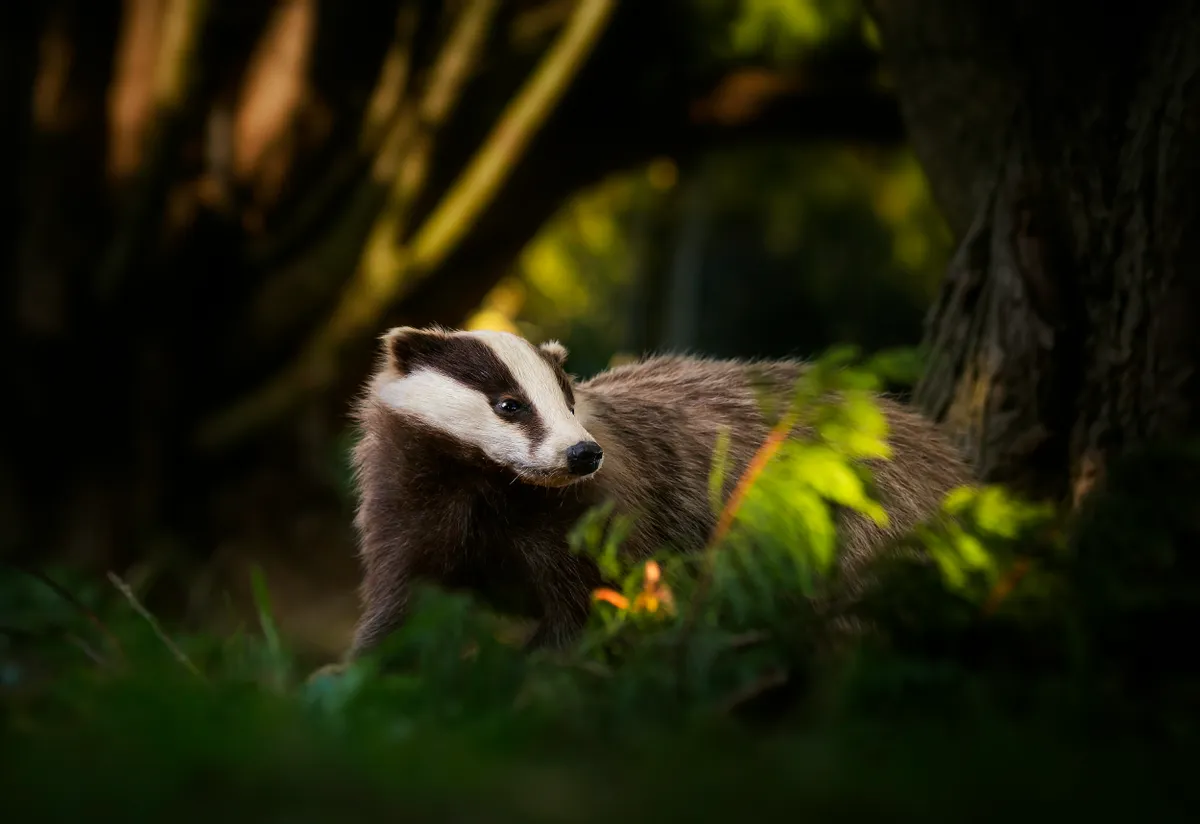
What is the social structure of badgers?
Badgers live in complex social groups, which average about five adults. There is usually a slight preponderance of females because of the higher mortality of males in fights and on roads.
Only some females breed. Those that do not are generally smaller and more likely to carry scars on their rumps from fights.
Cubs of subordinate sows may be killed soon after birth by dominant sows and left outside the sett.
How dangerous are badgers?
During fights badgers often bite each other’s rumps, tearing off chunks of skin and flesh. Males fight in spring and late summer, when they are mating; females throughout the year.
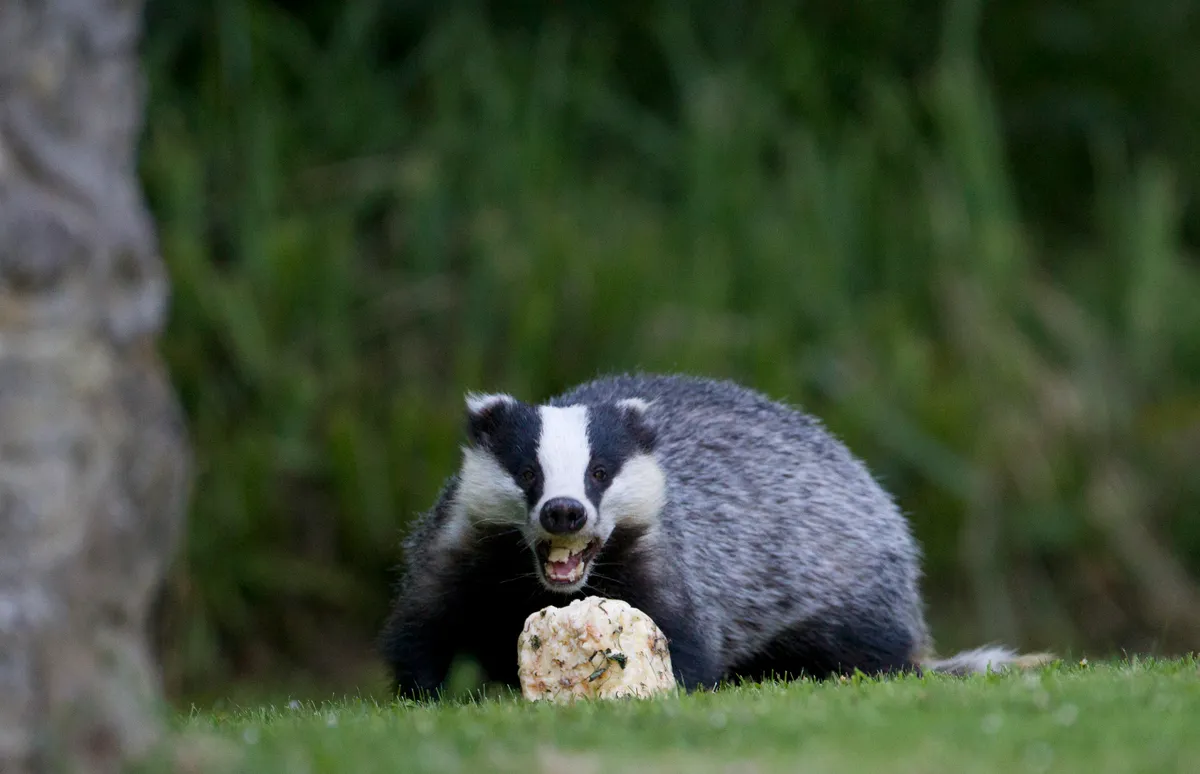
Where do badgers live?
Badgers live in setts which are usually found in the countryside in woodlands or the edges of fields. Badgers can still be found in urban areas in woodland parks and green spaces.
Juveniles often play around the sett – particularly leap-frog and king-of-the-castle. See below for the best places to see badgers in the UK.
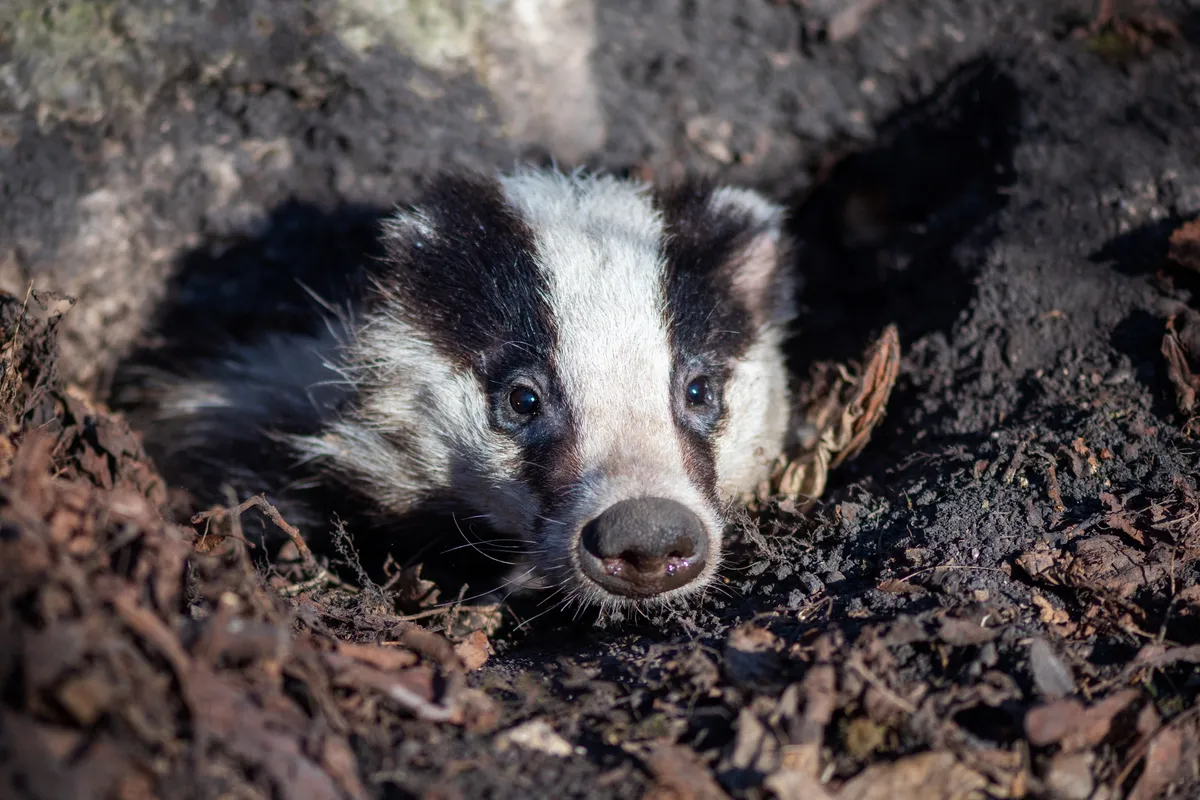
In spring and summer, badgers dig out their setts. Setts can be used by many generations of badgers, and why they are extended is not clear – it may be that with more nest chambers, parasites build up less.
Bedding collection is common, especially in spring and to a lesser extent after harvest time, when there is straw and hay debris in the fields.
Month-by-month guide to badger activity
Find out what badgers get up to throughout the year.
Words: David Dixon
January
Badgers do not hibernate, but their activity is irregular at this time of year. Sows are pregnant and all the group members are living off their fat reserves.
February
The month when most cubs are born, and also the start of the mating season. Typically, two or three cubs are reared, but this depends on a sow’s age and social status.
March
Badgers are more active – reflected by a peak in road kills. Sows often move their cubs if disturbed by amorous males. Look for freshly dug soil and discarded bedding.
April
Cubs make their first appearance above ground. The adults are very hungry, especially lactating sows, and all spend more time foraging.
May
Cubs start to accompany adults on feeding excursions. The breeding sows are extremely wary of potential predators such as foxes, which they often attack on sight.
June
Most cubs are weaned by the end of the month. Long days make this one of the best months for badger watching.
July
Cubs forage independently and travel greater distances in search of food. Adults make increased use of dung pits at greater distances from the sett.
August
Dry weather can lead to a shortage of worms and other natural food. Mortality increases, especially among the young. Badgers may visit gardens to drink from ponds.
September
Look out for signs of increased digging and bedding collection. Autumn is when most dispersal takes place, involving mainly young males. Increased mobility means another peak in road kills.
October
Shorter days stimulate a second peak of mating activity. Badgers feed heavily on nuts, seeds and berries to lay down fat reserves for the winter.
November
Digging and bedding collection continues. Animals are less active, especially in wet weather. Fewer tunnel entrances are in use and many become blocked with leaves.
December
More nights are spent underground. Implantation of the blastocysts (fertilised eggs) takes place around the time of the winter solstice in the second half of the month.
What do badgers eat?
Badgers are good foragers and their diet tends to consist of earthworms, slugs and snails and wild fruits, nuts and seeds. They are also known to eat small mammals, such as mice, rats and squirrels and rabbits and amphibians, such as frogs and toads. There have been various studies into whether badgers are responsible for the decline of hedgehogs.
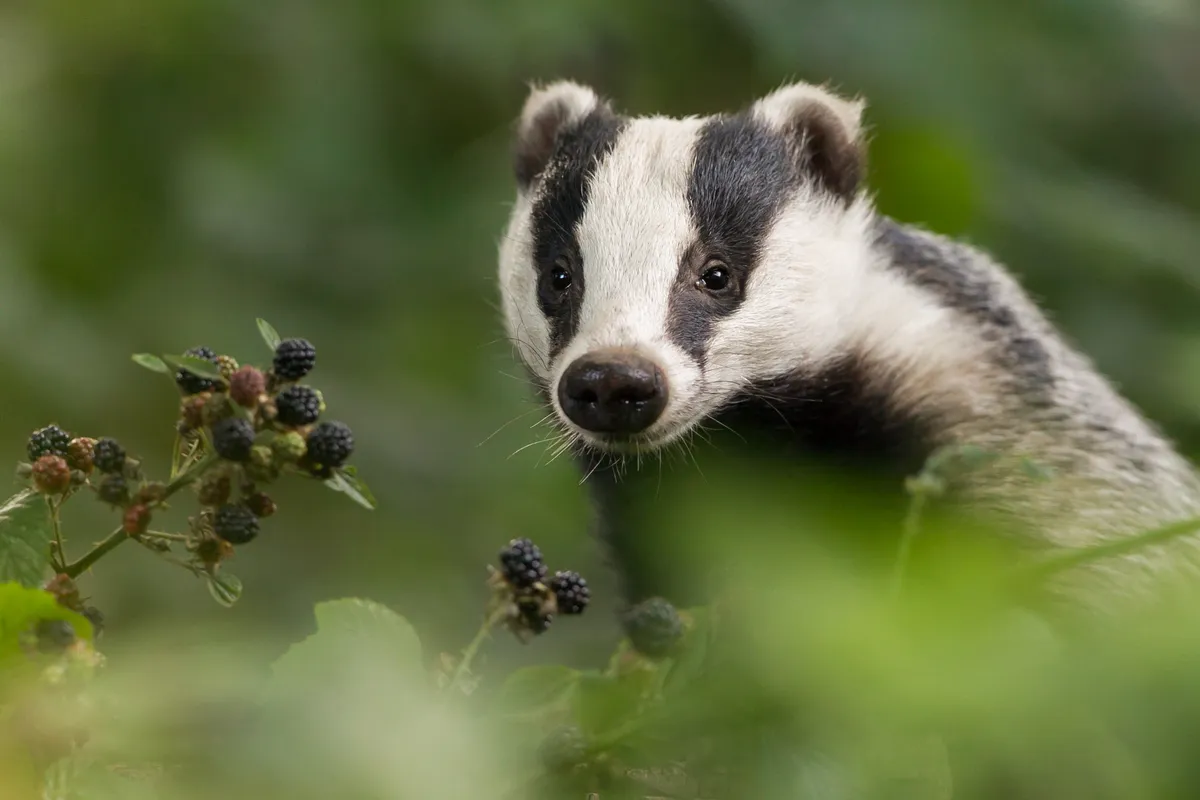
How do badgers groom each other?
There is frequent social grooming, for which badgers use their incisors. They also engage in scent-marking, particularly ‘bum-pressing’, where one badger presses the scent gland under its tail onto another badger, so that the group shares a common odour.
When do badger mate and breed?
Mating occurs mainly in early spring and late summer, often close to setts or in sett entrances.
Delayed implantation occurs – blastocysts (very early embryos) implant in late December or early January, and the peak birthing period is early February. The typical litter size is two or three.
Newborn cubs emerge after 8 to 10 weeks, usually in late April or early May, and have silky, grey fur. Their behaviour is cautious until late May.
Why do badgers have black and white stripes?
Newborn badgers show hints of two dark eye-stripes in otherwise thin, silky fur, and by the time they leave the sett they have developed full adult coloration. They also behave exactly as adults do when threatened, facing the enemy with lowered heads and fluffed-up coats. This displays remarkable confidence for their size, suggesting that the stripes may be a warning.
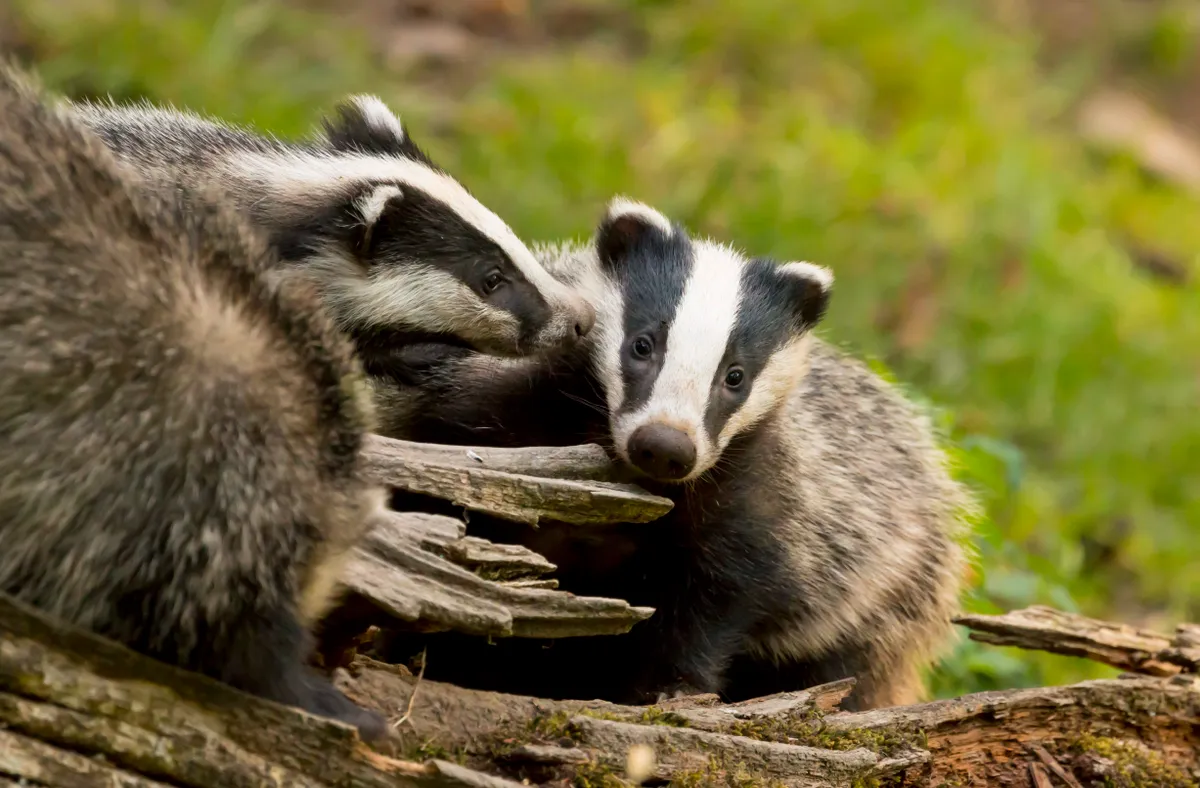
Badgers have poor eyesight, so their stripes are unlikely to be for soliciting grooming or attracting mates, and in 1911 Reginald Pocock was one of the first zoologists to speculate that it was warning coloration. His hypothesis was backed up in a 2005 paper by Chris Newman, Christina Buesching and Jerry Wolff. They concluded that the European badger, American striped skunk and other middleweight carnivores evolved dazzling patterns to flag up their main defence (anal scent glands in skunks; huge jaws in badgers) to predators.
An old name for badger is ‘grey’, alluding to a rather odd attribute. Its body and leg fur is mostly pale grey: only part of the longest, wiry ‘guard’ hairs is black, producing the overall grizzled appearance. A drawing in Ernest Neal’s monograph The Badger (1948) shows how each mature male’s guard hair is white for 4.4cm, black for 2.2cm and white for the final 1.4cm.
Why do badgers give birth in winter?
Much of what we know about badger ecology comes from long-term studies at Wytham Woods near Oxford and Woodchester Park in Gloucestershire, where scientist Steve Carter of the Animal and Plant Health Agency is based.
“In winter badgers don’t hibernate, but spend far more time in their setts so we see them less,” he says. “They do emerge to forage in mild weather, generally being more active further south and if they are regularly fed by people.”
Despite female badgers eating less and living off fat reserves, winter is nevertheless when they give birth to their cubs, which are helpless, blind and barely 12cm long, with a 3–4cm tail. Yet this makes sense in the long run, explains Steve.
“The aim is for the cubs to start venturing above ground in April or early May, when invertebrate food is plentiful and they have as much time as possible to put on fat to prepare them for their own first winter. To get this timing right, female badgers must give birth between January and March, with February usually the peak month in Britain.”
Pregnancy lasts six to seven weeks in badgers, so it follows that sows need to fall pregnant in December. But mating normally takes place in spring or summer. The solution is delayed implantation. “Each blastocyst, the tiny ball of cells that becomes an embryo, does not implant for several months,” says Steve.
“Interestingly, a female badger may mate with more than one male and bear a litter of mixed parentage. She can also ovulate a second time and mate again while already carrying blastocysts from an earlier mating, and still start the pregnancy at the same time to produce a single litter of cubs. This remarkable ability is called superfetation.”
Did you know?
In northern Russia badgers seldom leave their sett in winter. In southern Spain, however, they remain fully active since their main food – rabbits – is still easy to find.
How protective are badgers of their young?
Badger cubs are born in early February, but life for newborns is dangerous. In the first couple of weeks, up to a third may die underground; most of them will have been killed by sows who have their own cubs.
The survivors emerge from the sett when they are nine to ten weeks old. Watching a sett in late April and early May is the best time to see the cubs’ first foray above ground.
Keep an eye on the entrance because they will probably remain in it, or nearby, as well as staying extremely close to their mother. She will herd them below ground at the first sign of danger, and even drag a cub to safety by the scruff of its neck.
Foraging trips
Sometimes the sow will take her young on short trips while she is foraging, but she is very wary of danger.
When a female appeared in my garden with three very young cubs, she spent most of her time rounding them up and trying to hide them in the flowerbeds while she ate the peanuts on the lawn.
How much of a threat are foxes to badger cubs?
The sow was particularly nervous when there were foxes around, repeatedly rushing at them with her back arched and fur raised to make herself look larger and more aggressive. Females with cubs may even corner and kill foxes.
A few nights later, the sow had given up trying to marshal her cubs; they chased each other around the lawn, seemingly oblivious to any threat from the foxes.
Best places to see badgers in the UK
Increase your chance of seeing a badger in the wild with these tops tips from the Jack Reedy at the Badger Trust.
Most rural woodlands will have a badger sett hidden away somewhere, and there are even some small urban badger populations if you know where to look. But if you want the best possible chance of seeing badgers, here are some of the best sites in the UK.
By far the most exciting way to watch badgers is to search for an active sett – look for piles of fresh spoil outside, well-worn paths and a latrine pit full of droppings. The telltale signs of these enchanting mammals are far less attractive than the badgers themselves!
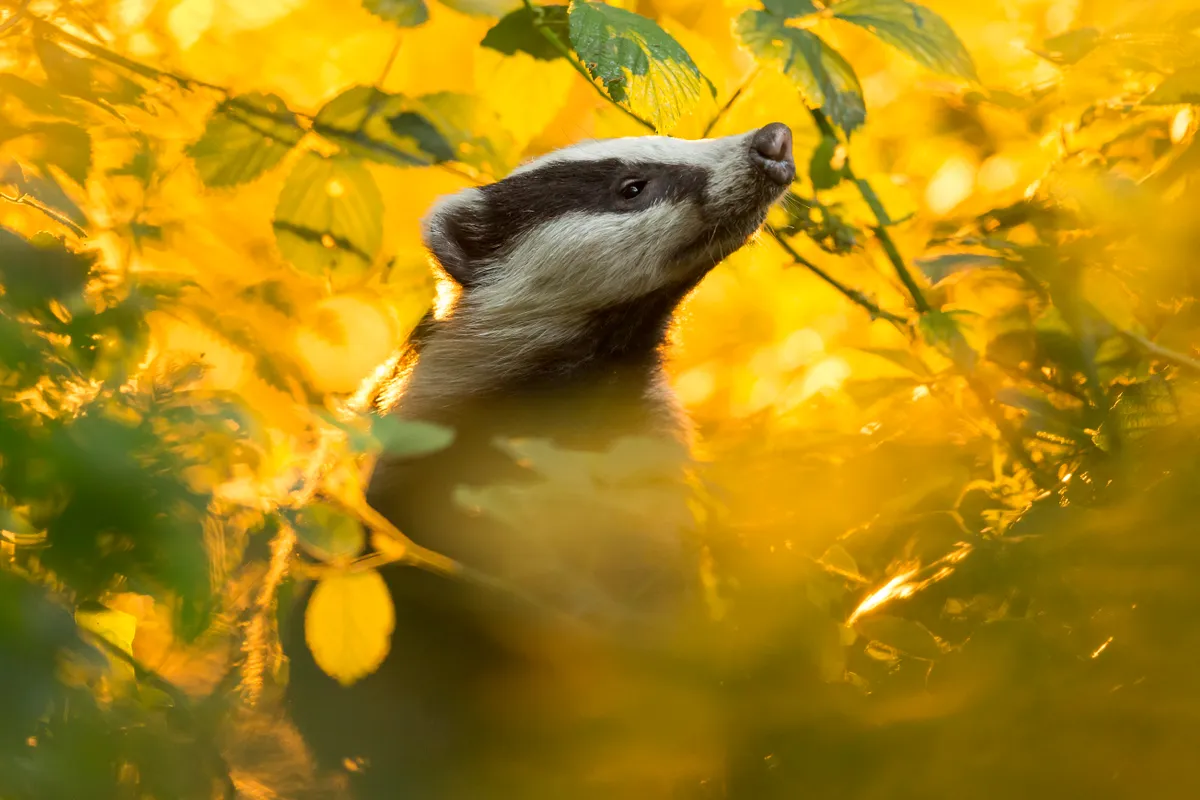
How to watch for badgers
1
Wear the right clothing for badger watching
Pack a waterproof and extra layers, a hat and gloves in a rucksack – it quickly gets chilly after dark. In summer, take insect repellent. For badger watching, the best binoculars are lower-magnification models (such as 7 or 8x) with wide objective lenses (42–55mm), because these tend to produce a brighter image in low light.
2
Get to the badger sett nice and early
Stealthily approach your chosen sett an hour or so before dusk. Don’t flash lights unnecessarily in case people living nearby report suspicious behaviour to the police.
3
Position yourself well
Pick a comfortable spot, with the sett at least 10m in front of you and your back to a tree or hedge, to avoid the badgers seeing you outlined against the sky. Ensure that the wind is on your face so that you’re downwind of the sett.
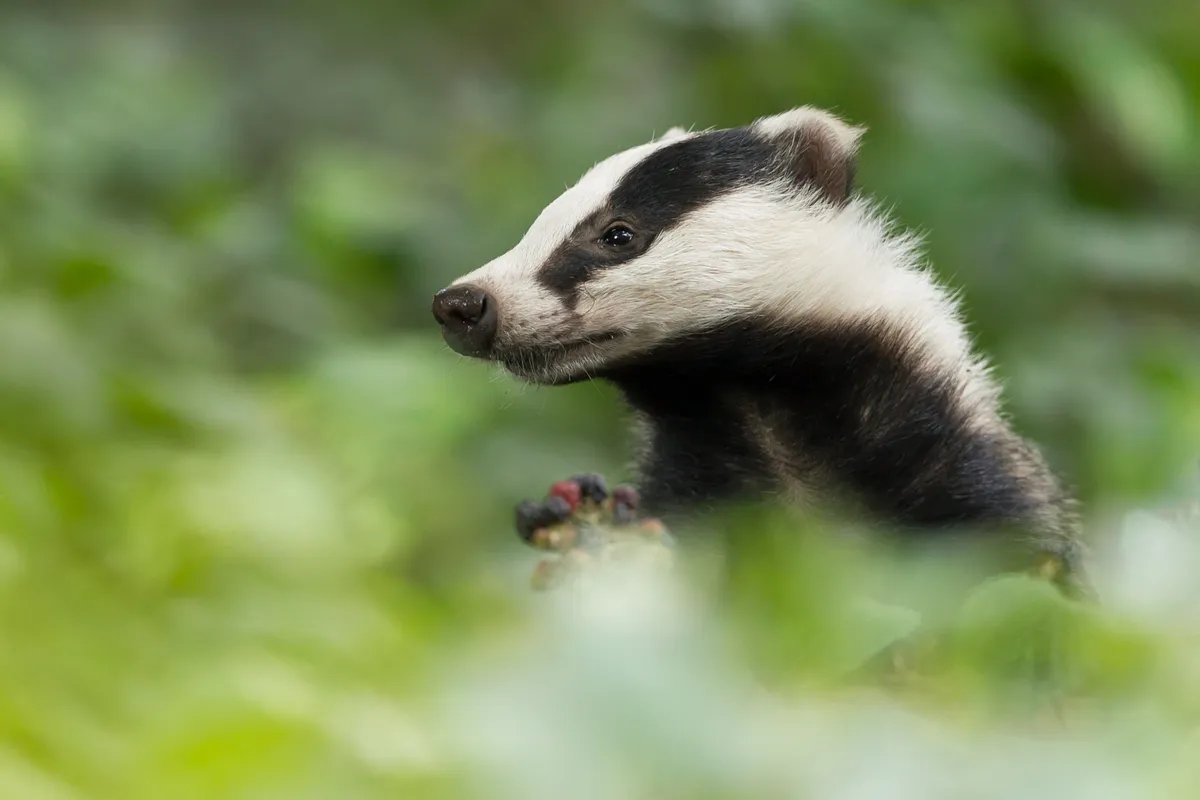
4
Stay still and smell natural
Badgers have phenomenal hearing and powerful noses, so avoid perfume or aftershave, and don’t rustle clothing, snap twigs, cough, sneeze, whisper or smoke.
5
Use torches carefully
Take a torch with a dimmer function, and set the brightness as low as possible; some people also advise a red light. When badgers appear, shine the beam upwards at first, then lower it gradually, but only as far as necessary.
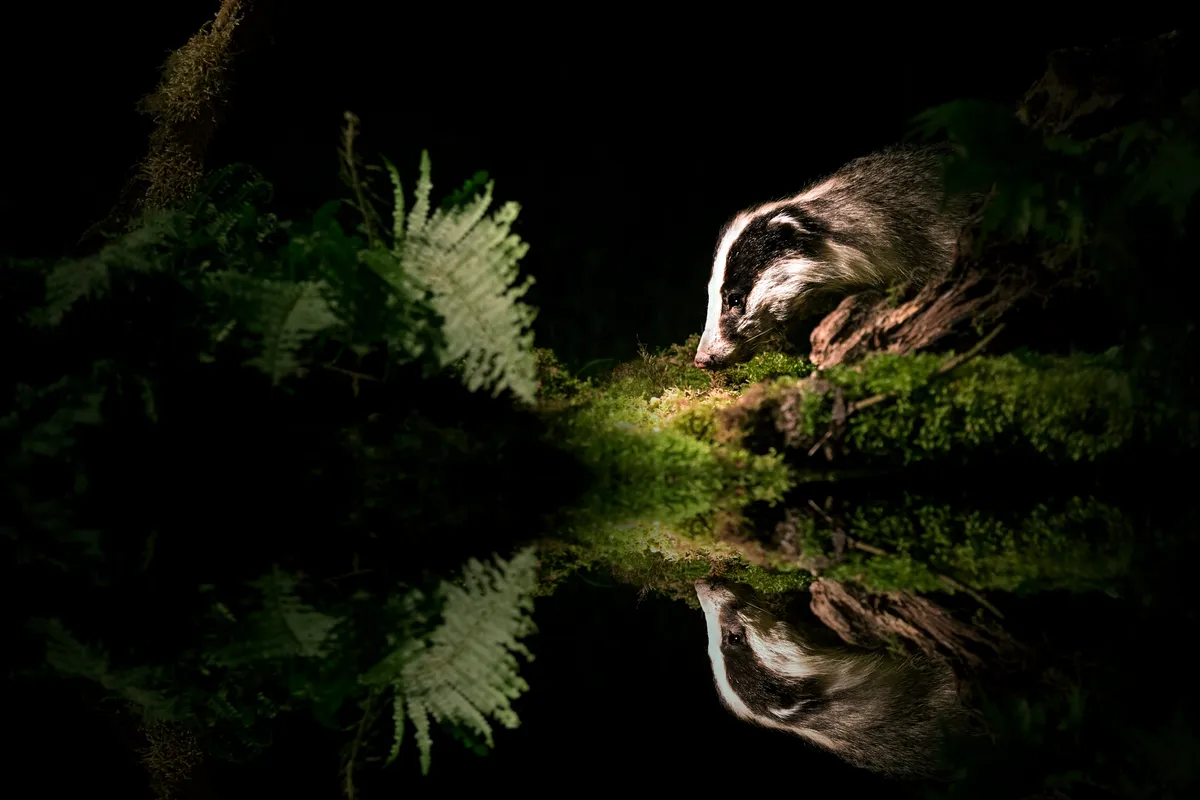
6
Don't disturb the badgers
Take pictures at the end of your session in case the sound of your camera frightens the badgers away, and don’t leave the sett area until they have finally dispersed to forage.
7
Badger watching requires patience
Sometimes badgers simply hide, but don’t give up! Aim to visit the sett several nights in a row – that way, you should get lucky on at least one evening.

